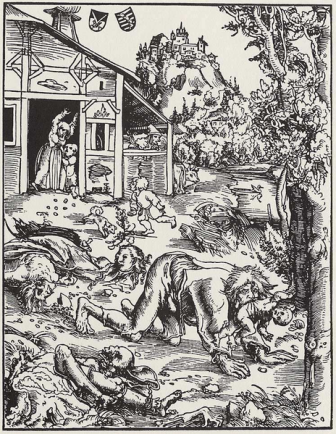Those who observe and do research about mythology of werewolves, these following facts about werewolves should be really useful for you to read. Werewolves are mythological or folkloric human with the ability to shapeshift into a wolf or a therianthropic hybrid wolf-like creature, either purposely or after being placed under a curse of affliction (via a bite or scratch from another werewolf). To get to know more about it, here are some other facts about werewolves you may consider interesting.
Facts about werewolves 1: World’s Cultures
Werewolf legends exist in most of the world’s cultures. Some of the tales date back to the beginning of written history. One of the earliest examples is the story of King Lycaon of Greece.
Facts about werewolves 2: Lycanthropy
Lycanthropy is the supernatural condition whereby a human transforms into a wolf. If an afflicted person transforms into another type of animal, the correct term for their condition is therianthropy.
Facts about werewolves 3: Serial Killers
Historically, werewolf legends have been used to explain the acts of serial killers. Rabies, schizophrenia, porphyria, and hypertrichosis or those medical condition that cause excessive hair growth have also been mistaken for lycanthropy.
Facts about werewolves 4: True Silver
Some suggest that mercury, not silver, might be the best choice for dealing with werewolves. Alchemists in ages past could have easily mistaken quicksilver for true silver.
Facts about werewolves 5: Peter Stubb
Peter Stubb was known as the Werewolf of Bedburg. In 1573, he was accused of killing several people, including his own son, before he was sentenced to death. Stubb claimed that his powers were granted by the Devil, who presented him with a magical belt which transformed Stubb into a monstrous wolf.
Facts about werewolves 6: Ravaging Werewolf
In 1764, the Beast of Gevaudan terrorized a small town in southern France. The Beast killed between 60 and 100 people, but its true identity was never proven. Some believed that the Beast was a ravaging werewolf.
Facts about werewolves 7: Hounds of God
Not all werewolves are bad guys. In 1692, in Jurgenburg, Livonia, a man known only as Thiess testified under oath that werewolves were the Hounds of God . He claimed that werewolves battled against evil forces. The fictional character Remus Lupin, of Harry Potter fame, was also a werewolf – and a decent fellow.
Facts about werewolves 8: Werewolf Movies
Werewolf movies commonly link lycanthropy with the onset of puberty. Both conditions commonly involve hair growth, mood swings, and strange new impulses.
Facts about werewolves 9: Film
The first movie to feature lycanthropy was The Werewolf, a twenty minute silent film from 1913. The top grossing domestic werewolf film is 1994’s Wolf, starring Jack Nicholson and Michelle Pfeiffer.
Facts about werewolves 10: Creation of Werewolf
Werewolves can be created in a variety of ways. Some say that lycanthropy is a curse or divine punishment. Others say it is the result of deals with dark forces. Still others suggest that werewolves can be born naturally, contract lycanthropy through the bite of another werewolf, or obtain their powers by wearing an enchanted wolf skin or belt.
Those following facts about werewolves should probably open your mind up. This mythology relates closely to the human, actually, although in a different term. Hope you would find these werewolves facts interesting and useful for you to read.










 www.PortlandPayday.Loans
www.PortlandPayday.Loans